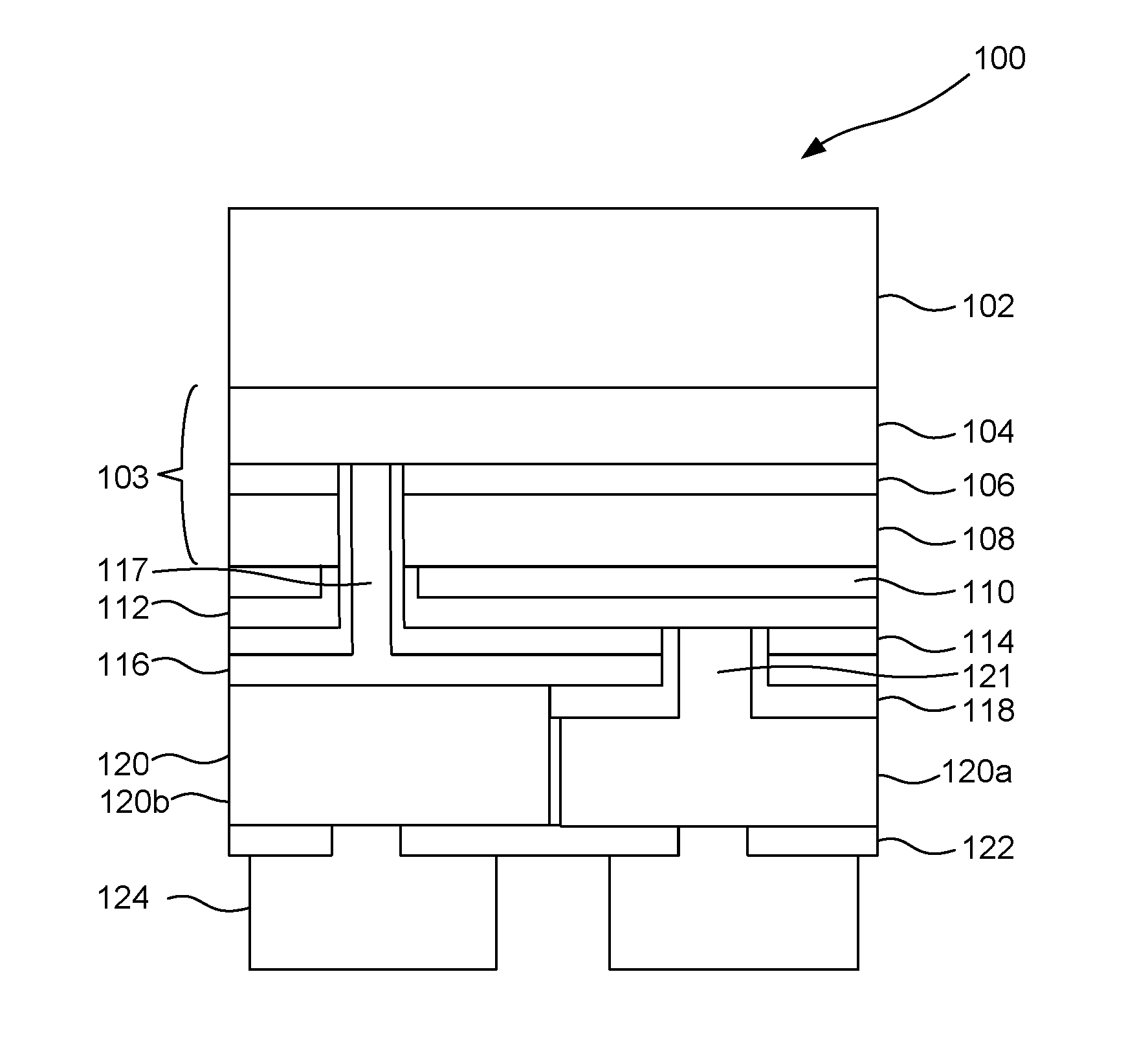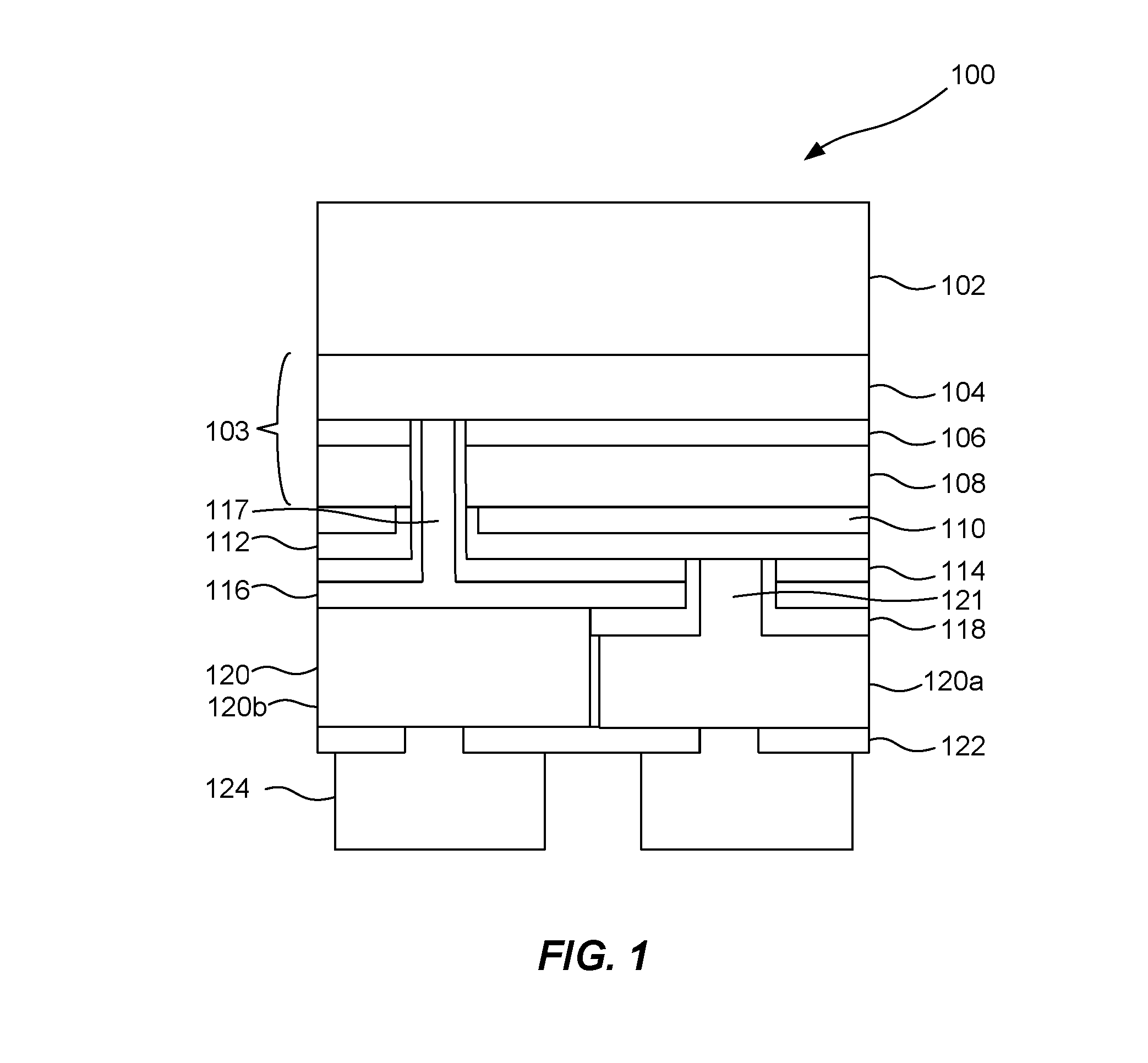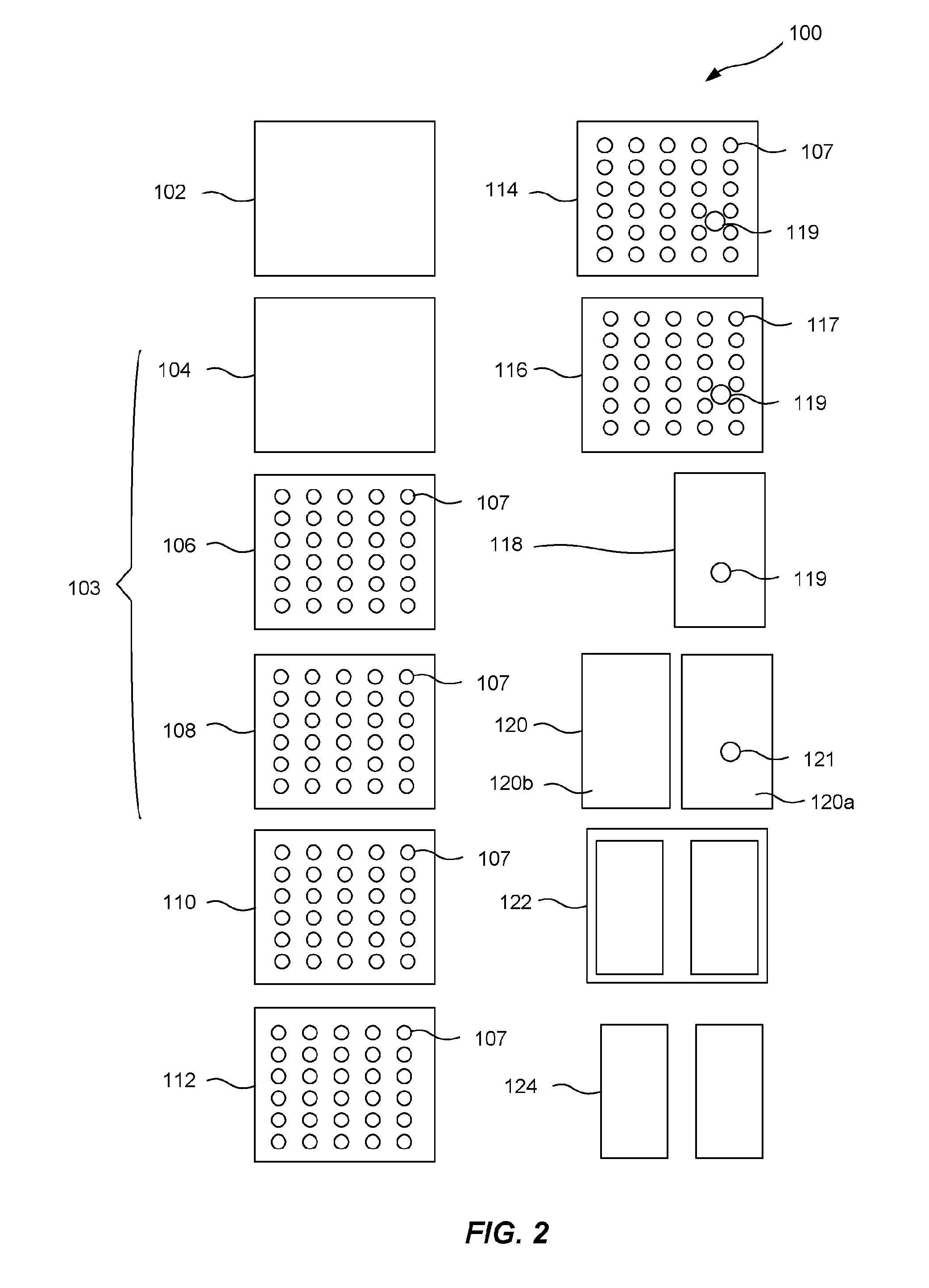A light emitting die component formed by multilayer structures
a multi-layer structure and light-emitting die technology, applied in the direction of basic electric elements, electrical equipment, semiconductor devices, etc., can solve the problems of reducing quantum efficiency and thereby light output, stud-bumps interconnect approaches (related to functions iii and iv) can face serious heat-sinking limitations, existing fc die architectures generally present performance limitations in one or more of the seven previously listed essential functions, etc., to achieve high die area coverage, reduce hot spots and thermal resistan
- Summary
- Abstract
- Description
- Claims
- Application Information
AI Technical Summary
Benefits of technology
Problems solved by technology
Method used
Image
Examples
Embodiment Construction
[0031]The present invention will now be described more fully hereinafter with reference to the accompanying drawings, in which currently preferred embodiments of the invention are shown. This invention may, however, be embodied in many different forms and should not be construed as limited to the embodiments set forth herein; rather, these embodiments are provided for thoroughness and completeness, and fully convey the scope of the invention to the skilled person.
[0032]FIG. 1 shows a schematic cross sectional view of a first embodiment of a light emitting die component 100 according to the present invention. The light emitting die component comprises a substrate 102, a semiconductor structure 103 of GaN with an n-type layer 104, an active region 106, and a p-type layer 108, a p-contact layer 110 arranged to be in electrical contact with said p-type layer 108, a barrier layer 112 preventing migration of metal atoms, an n-contact layer 116 arranged to be in electrical contact with sai...
PUM
 Login to View More
Login to View More Abstract
Description
Claims
Application Information
 Login to View More
Login to View More - R&D
- Intellectual Property
- Life Sciences
- Materials
- Tech Scout
- Unparalleled Data Quality
- Higher Quality Content
- 60% Fewer Hallucinations
Browse by: Latest US Patents, China's latest patents, Technical Efficacy Thesaurus, Application Domain, Technology Topic, Popular Technical Reports.
© 2025 PatSnap. All rights reserved.Legal|Privacy policy|Modern Slavery Act Transparency Statement|Sitemap|About US| Contact US: help@patsnap.com



